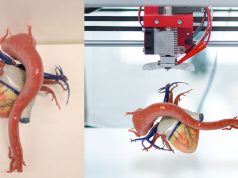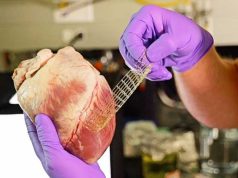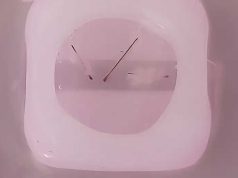The Callier Center for Communication Disorders at the University of Texas at Dallas recently celebrated the opening of its clinical innovation lab on the Richardson campus and the use of 3D printing technology to create custom earmolds for pediatric hearing aids.
Earmolds, which conduct sound from the hearing aid to the eardrum, must be customized to fit the wearer’s ear canal. Fast and precise production is crucial, especially for fast-growing infants, who often need several earmolds in the first few years of life. The Callier Center has printed over 1,200 earmolds for more than 800 patients on site since August 2022, significantly speeding up the traditional ordering process, which takes two to three weeks. Thanks to the new method, production takes less than six hours.
“As this innovation became a standard of care at the Callier Center, we identified that the 3D-printing lab needed a location and research space of its own,” Gohmert said. “We recognize this could also be the location for further Callier clinical innovation for the future.”
The lab was made possible by generous donations from the community. At the dedication ceremony on May 29, Dr. Angela Shoup, executive director of the Callier Center, highlighted the donors’ support. “Callier is committed to raising the standard of patient care through designing innovative solutions to improve health care efficacy and efficiency,” Shoup said. “With the help of generous donors, the newly opened Callier Clinical Innovation Lab is changing how earmolds for hearing devices are produced, providing training workshops for audiologists and clinics, collaborating with other departments at UT Dallas, and so much more. This is one example of the type of clinical innovation made possible through community support of the clinical innovation lab.”
The Callier Center is considered a pioneer in the on-site production of earmolds using 3D printing in the United States. These advances have already been shared with audiologists and clinics across the country to bring the benefits of this technology to a broader patient base. The center recently hosted a unique 3D printing workshop where over 20 participants from six states were trained in the various aspects of earmold production. The goal of the workshop was to empower participants to set up similar labs in their own facilities, improving hearing aid fitting nationwide.
Subscribe to our Newsletter
3DPresso is a weekly newsletter that links to the most exciting global stories from the 3D printing and additive manufacturing industry.






















